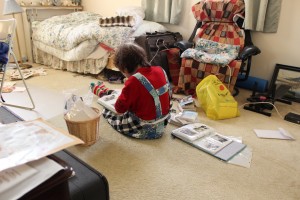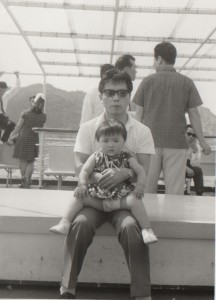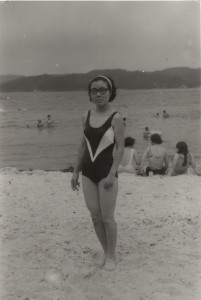This weekend, sneaking out of dorm life, I went back to my home in North Vancouver. I came home to see my grandmother organizing picture albums she had accumulated since her marriage with my grandfather tracing her journey in Japan and Canada.

In times now where my mother and grandpa cannot have a conversation without starting up a fight, the pictures illustrated innumerable moments in the past that I had missed out on. Innocent moments such as where my grandfather would be holding my mother as a toddler, or my (currently very skinny) grandmother as young, fit woman.


The pictures are very treasured pieces of information to me. Valuable archival material that, like the archivists at an archive, I wouldn’t want people destroying or taking out of order. I have always valued these pictures as the pieces of paper allow me to take a look into the years I did not live, they allowed me to understand a family history I am unfamiliar with. The orders in which the pictures were put in are only known to my grandmother who created the files, and has her own story behind each moment she captured. Not only the subjects of the pictures, but the backgrounds of the pictures were as well are interesting to see, as they also give me insight into the landscape of my neighbourhood thirty, forty years back. Interestingly, I also create new memories while exploring these photo albums, as new characters are put into the familiar landscape and in such ways, I create my identity as member of this family.
However, considering in downsizing, the past few years my grandma has been in a phase of clearing out as much as her possessions as possible. But it upsets me that she was picking out pictures from the albums and throwing away certain pictures that she found were blurry and pointless. To her, these are not of archival material. They are just like pieces of clothing that we find we don’t particularly need or feel attached to anymore. In addition, although some may fade, the experiences and memories from the pictures are already engraved in her memory, and it is not necessary for the physical pictures to remain.
When grandma throws these pictures in the trash, for those who need to refer to these materials in the future, it is an act of destroying memory. Based on the Archival practices that I’ve learned from Rodney G.S Carter’s Of Things Said and Unsaid: Power, Archival Silences, and Power in Silence, she is silencing certain experiences and obstructing certain memory claims to be made by an observer. For me personally, I am no longer able to make understanding of the story of my family without this information, denying my ability to understand my identity.
I ended up picking out the pictures she threw away from the trash bin after she left. If these pictures did get demolished I suppose it would just mean certain memories wouldn’t exist to me and I wouldn’t even notice those silences existed. However I personally believe that if it is possible, it is the out of the good, and ethics of an archivist to preserve as many memories as possible and when possible.



